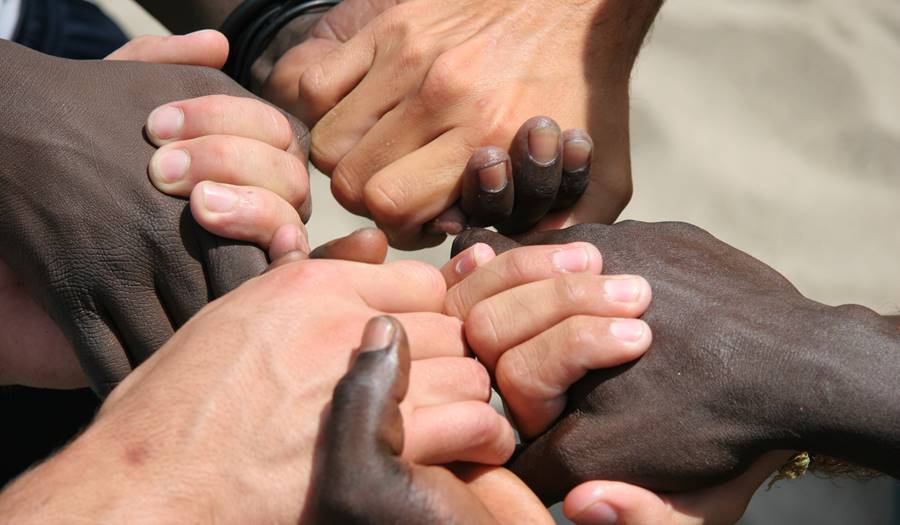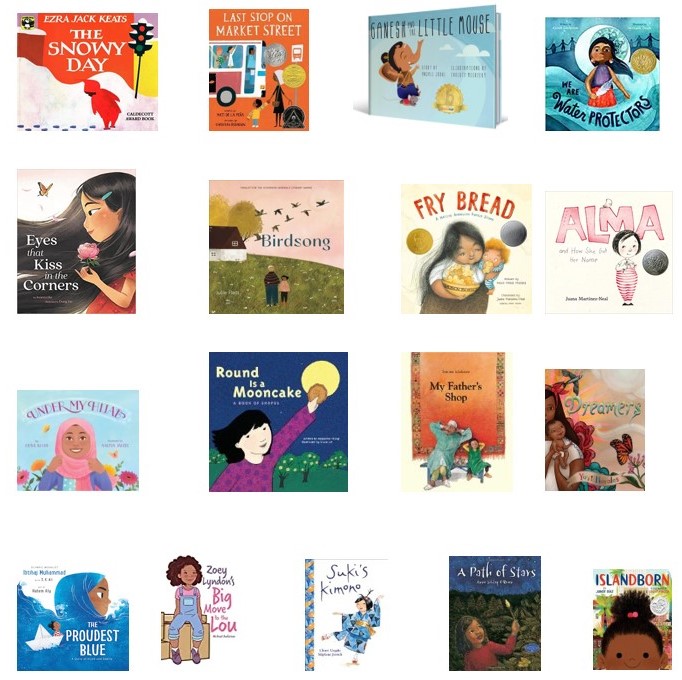
Racism and Health
1/17/2022
The American Academy of Pediatrics calls racism a “socially transmitted disease” that is passed down through generations. Racism is when society creates and maintains a system that results in structured opportunities. This structured system assigns value based on an interpretation that society created about how one looks, their race. This structure based system causes an unfair disadvantage to the non-dominant population. This disadvantage can be to an individual or to a community. Racist systems also unfairly give other individuals or communities an advantage. Society is weakened by racism. Why do we worry about racism in relation to our children? Children experience and witness racism and it negatively and severely affects their health and development.
Children and Racism
Children can experience racism in many ways. Some ways are what we call explicit. This includes being called racial slurs, being treated like a racial stereotype, or being disrespected. Explicit racism also includes threatening behavior, physical abuse, or attacks. The children may be victims of racism or may witness their parents or sibling experiences the same.
There are also implicit ways a child can experience racism. Implicit racism includes where a child lives, their education, economic means (meaning what they have), legal means (how their rights are executed), health care access and health outcomes.
Living Conditions
Children affected by racism face barriers to equal opportunity and services including safe and healthy living conditions. BIPOC (Black, Indigenous, and People of Color) children have less access to safe housing. They are exposed to higher rates of unhealthy air and toxins.
Children affected by racism also have less access to nutritious foods with many BIPOC communities considered food deserts (also called food apartheid). Food deserts are areas that have limited access to affordable and nutritious food such as fruits and vegetables. BIPOC communities are less likely than low-income white communities to have access to grocery stores and are more likely to rely on small stores, like a convenience store, for food. These stores tend to have fewer produce and meat options that grocery stores. And in locations that do have a grocery store, they are often classified as food mirages. This means that even though food is available, it is not affordable to the local community, again forcing them to buy food in smaller retail stores or rely on fast food.
Economics
Racism results economic disparities for BIPOC families. They are at higher risk of parental unemployment and lower household net wealth. These barriers compound on themselves, making it harder to access services and opportunities, and as above, less access to good housing, good nutrition. It also reduces access to good educational services.
Racism is still inherently found in the welfare system and social security system. Although improved over the years, the benefits still have elements of discrimination with rules that make it harder for BIPOC families to receive and keep services.
Education
School is a huge part of childhood and a major factor in childhood development. Racism that affects education prevents children from reaching their full potential and receiving the full benefits of education. Did you know that not receiving full educational benefits affects your health by lowering life expectancy and increasing the risk of chronic disease?
Racism can result in reduced school attendance. School attendance is linked to health disparities. Chronic absenteeism, which is classified as more than 10 missed days per year) affects many more BIPOC children then white children. Only 17.3% of white children experience chronic absenteeism, whereas 21.2% of Hispanic children, 23.5% Black children, and 27.5% Indigenous children are chronically absent. The higher rate of absenteeism is attributed to higher levels of poverty, disability, and chronic disease.
Racism undermines academic and vocation attainment. When in school, BIPOC children are less likely to have experienced teachers and access to advance course work. Their abilities are often underestimated. BIPOC children have lower GPAs and fewer years of schooling. High school graduation rates are 88% for white children, 76% for Black children, 72% for Indigenous children, and 79% for Hispanic children. BIPOC high schoolers are more likely to be told NOT to pursue college. Having just one BIPOC teacher during their education changes these statistics and increases the rate of graduation and college enrollment.
BIPOC children are less likely to have access and receive special education services. Even accounting for poverty levels, schools with predominantly BIPOC populations receive lower funding for special education programs than those with predominantly white children.
BIPOC children are also more likely to have harsher punishments for minor misbehavior. This is even more true if the teacher is white. This difference in treatment can be seen starting in preschool. BIPOC children are at increased risk for suspension and being expelled. They are expelled twice as often as white students for the same behavior. Harsher punishments occur less frequently in schools that have a good racial climate.
Legal
Racism can also affect BIPOC children in the legal system and can shape the juvenile justice system. BIPOC children are more likely to be incarcerated than white youth. They are also more likely to be put in solitary confinement and to suffer abuse when incarcerated.
Health Care
Health care is not void of racism. There is implicit and explicit racism in health care settings. There is less access to health care in communities with predominantly BIPOC members. Also, there is a history of distrust in the medical system due to research and treatments being done without informed consent. The BIPOC community also has a history of poor treatment by health care providers. In personal interactions, BIPOC families are more likely to be labeled as difficult patients and less cooperative. BIPOC families are also more likely to be reported to social services than white families with similar situations. They are also more likely to have symptoms ignored. Referrals are also made later in diseases. This, in turn, results in delayed treatment and poorer treatment outcomes.

Health Outcomes
All the above factors, also known as Social Determinants of Health (SDOH), negatively affect a child’s health. SDOH are factors that affect health that are NOT based on genetics, individual behavior, or choice. Instead, SDOH are economic, political, and social factors. These factors are the important in determining health and wellness in a person and community. Differences in SDOH drive health inequities. While SDOH can affect anyone, these factors are heavily affected by racism. The earlier these factors affect a child, the MORE likely they are to affect their adult health.
Racism affects health before a child is even born. Racism and the resulting effects are linked to birth disparities. Racial discrimination and the resulting maternal stress are associated with higher infant mortality rates and low birthweight. BIPOC babies are twice as likely to die at birth and three times more likely to die of complications due to low birth weight. BIPOC mothers are 3 to 4 times more likely to die than white mothers. BIPOC mothers, particularly Black mothers, are less likely to initiate breast feeding and continue breastfeeding.
Racism also results in higher risk of chronic health problems. Racism itself, as well as SDOH factors, result in chronic stress. Chronic stress causes stress hormones to increase. This causes inflammatory reactions in cells and in the body. Inflammation results in increased risk of chronic disease. This, combined with food deserts/apartheid and lack of nutritious food, results in higher rates of obesity, diabetes, and heart disease in BIPOC communities.
Poor living conditions mean that BIPOC children have higher rates of asthma and lead poisoning. Living in areas where health care access is challenging as well as the implicit racism seen in health care providers, BIPOC children often have delayed health care treatment and referrals. They are statistically less likely to survive childhood cancer.
Aces
BIPOC children are more likely than white children to experience Adverse Childhood Experiences (ACES). Experiencing a high number of ACES is associated with increased risk of health issues. Aces are highly stressful or traumatic experiences such as experiencing or witnessing violence at home or in your community, having a family member attempt or commit suicide, growing up in household with substance use problems, mental health problems, or having instability in your home or family as well as parental separation. ACES are linked to chronic illnesses, mental illness, and cognitive changes.
People experiencing ACES can increase the risk of
- Injury
- Maternal/pregnancy complications
- Child health problems
- Chronic diseases in including cancer, diabetes, and heart disease
- Chronic pain including headache
- Mental illness
- Substance abuse
- Suicide
- Being involved in sex trafficking
- Sexual transmitted infections
- Relationship issues
ACES and racism are both shown to stress the body causing changes in brain development. We can see these changes in children as young as 9 years of age.
ACES and racism are both shown to stress the body causing changes in brain development. We can see these changes in children as young as 9 years of age.
ACES and racism increase the risk of mental health issues including
- Attention Deficit/Hyperactivity Disorder
- Anxiety
- Depression
- Behavior Issues
- Withdrawing or Social Isolation
- Decreased self-esteem
- Increased hopelessness/helplessness
Epigenetics
The stress of racism doesn’t just affect that person, but it can be passed on to further generations. Stress causes changes in gene expression. These genes are not changed but HOW it is expressed is altered due to alterations in the epigenome. Stress, nutrition, and lifestyle choices can change gene expression. Genes may be passed down with altered epigenomes. Recent research in animal models shows that changes in genes due to trauma can be passed down for 14 generations! In addition to be inherited, epigenomes can also be altered prenatally due to stress or trauma.
Changes attributed to chronic stress from previous generations can be seen in individuals and at cultural and community levels. Genetic changes from chronic stress have been shown to result in the next generation experiencing exaggerated startle reflex, sleep issues, increase anger, and increase vigilance.
Witnessing Racism
Racism is incredibly harmful to those who experience it. It impacts living, education, economics, and health. But bystanders of racism also suffer from witnessing racism. Bystanders experience a psychological effect. This effect can be similar to the response of a first responder after a major disaster. Abusive events include witnessing physical or psychological harm to a person, when a power differential exists, or when abuse is repetitive. It can cause mental health issues, school issues, and developmental issues.
Racial Identity
Children start building a racial identity by the time they are 3-4 years old and start to recognize and internalize race. Negative racial identity affects physical health, mental health, as well as self-esteem. It can also affect development and school success as seen above.
Positive Racial Identity
Racial identity is our attitudes, perceptions, and beliefs about the racial group you belong to. Positive racial identity, where discrimination is discussed and mediated, improves youth outcomes. This is particularly important during adolescence when children are developing their social identity. Positive racial identity results in children who have higher self-esteem, better grades at school and have higher resilience.
Children need to be taught and supported to build a positive racial identity. Building a positive racial identity can begin from infancy. One easy way is to expose a child to books, television, and movies where they can see themselves in stories, with people who are of the same race.
Ways to help build or maintain a positive racial identity include:
- Reinforcing those members of their group can make positive achievements if given equal opportunities as the dominant group
- Teaching them they deserve the same rights and entitlements as the dominant group
- Teaching children that their group is equal and as good as the dominant group
- Teaching children that stereotypes, prejudice, and discrimination are wrong
- Teaching children that there is PROOF that prejudices and stereotypes are untrue
- Expose a child to books, television, and movies where they can see themselves in stories, with people who are of the same race
- Expose the children to historical figures and their groups accomplishments, values, and culture
- Define and frame success, strengths and accomplishments and do not base these on the dominant group’s definition or standards
- Provide role models and expose children to members of the group who are in power and control
- Acknowledge racism, prejudice, and discrimination exist
- Explain why their group is mistreated and prepare them for discrimination
- Work on developing responses to racial discrimination
- Work to teach your child they do not need to apologize for their race or overcompensate to prove their worth

Anti-Racism
Racial Bias
How do we develop racial bias? Racial bias can be seen as early as 6 months and by age 2-4 race bias is internalized. By age 12, most kids are set in their beliefs, meaning if they are raised with racist ideas, it is hard to undo those ideas. Like language, children absorb information about race, even if it is not explicitly discussed, just from living in society.
How to Talk About Race to Kids
Because children will pick up information about race and bias on their own, we need to speak to children about race, racial differences, and the fact that racial bias exists. Being “colorblind” does not help prevent or fight racism. Acknowledging differences is key to raising awareness and fighting racism. Different races, backgrounds and experiences help make our world a better place. Working to identifying differences and making differences normal and wonderful from a young age promotes the idea of equality.
How should we talk to kids about race? First off, make sure you confront any racial bias that you may have. Identify biases and correct yourself. Second, we want to be role models for our children. Diversity your social network, Include diverse books, television and movies in our family’s entertainment. The entertainment doesn’t need to focus on race as an issue but should be opportunities to highlight people of all types and races. Expose your child to other communities.
Discussions about racism and diversity should start early and be developmentally appropriate. Start with a diverse library with small children. Point out differences, use crayons as an example (there is a great pack out currently with all different shades of skin color) for younger children. As children get older, you may incorporate more details about different cultures, differences in races, about racism, and the history or racism. See the side bar for more educational resources.
We also want to raise our children to actively challenge racial stereotypes and biases. Let kids know that what race is and how different races and people add richness to our world and society. Discuss how sometimes people hurt others or treat others unfairly based on their race. Teach your child to not tolerate jokes, negative remarks, or racial slurs. Not only should they not make these, but they should also speak up against other’s making racist remarks.
Talk about fairness and equality and the difference between these two concepts. For older children, discussing privilege is important when discussing race. Privilege does not mean you haven’t struggled or have a hard time. What it means is that race is one thing that isn't part of your struggle.
Anti-Racism Resources
Racism can be a hard topic to start discussing and you may be nervous not to make mistakes. The following resources can be a helpful start. Link to books HERE.

Diverse Books for Each Age
Having a diverse bookshelf helps increase exposure to other races and cultures. Hearing about others and learning about their life and their life story helps your child identify with others, increases empathy, promotes cultural understanding, and increases understanding of their world and the people in it.
Young Children (links here)

School Aged Children (link here)

Teens (link here)

Jodi Cobb's Personal Favorites

WEBSITES AND OTHER RESOURCES
Watch the CNN/Sesame Street Town Hall on racism HERE
Trying Together is a Pennsylvania based organization that is doing national outreach to support high quality and inclusive education. They have a great anti-racism resource page HERE.
Nickelodeon Parents provides lists of books and outreach programs HERE.
Harvard University provides links to podcasts and books for older children and teens HERE.
Penguin House provides links to books, movies, and videos HERE
Healthline Parents provides books, social media accounts, podcasts, films, and other resources HERE.
Racism is poisonous to individuals, communities, and our society. Racism creates inequities that affect the health of our children. We at CHC do not tolerate racism in any form. We hope to provide you with a culturally competent and safe medical home.
Children’s Health Care of Newburyport, Massachusetts and Haverhill, Massachusetts is a pediatric healthcare practice providing care for families across the North Shore, Merrimack Valley, southern New Hampshire, and the Seacoast regions. The Children’s Health Care team includes pediatricians and pediatric nurse practitioners who provide comprehensive pediatric health care for children, including newborns, toddlers, school aged children, adolescents, and young adults. Our child-centered and family-focused approach covers preventative and urgent care, immunizations, and specialist referrals. Our services include an on-site pediatric nutritionist, special needs care coordinator, and social workers. We also have walk-in appointments available at all of our locations for acute sick visits. Please visit chcmass.com where you will find information about our pediatric doctors, nurse practitioners, as well as our hours and services.
Disclaimer: this health information is for educational purposes only. You, the reader, assume full responsibility for how you choose to use it.








